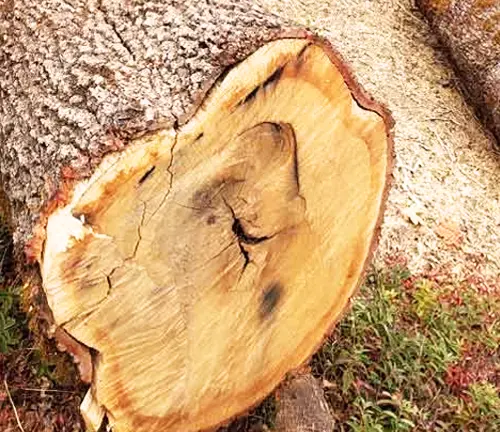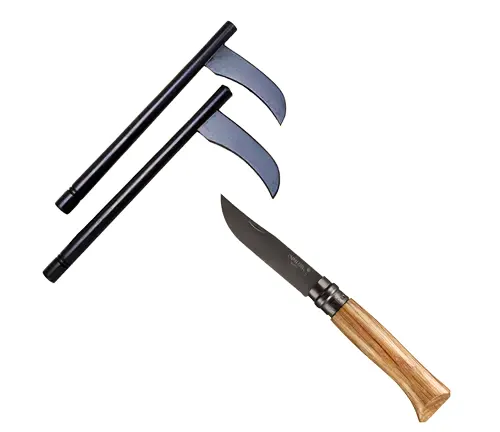Black Oak Wood
- September 5, 2023
- 0 comment

Black oak wood stands out with its deep, rich color and uniquely pronounced grain pattern, setting it apart in the realm of woodworking materials. This distinctive aesthetic quality lends an air of elegance and timelessness, positioning it as a preferred option for crafting high-end furniture and enhancing interior décor. The wood’s captivating dark hue adds an undeniable touch of sophistication to any environment, whether in traditional or contemporary settings. Moreover, black oak’s inherent durability ensures that the pieces created from it maintain their quality and appeal over extended periods, making it a reliable choice for lasting beauty and functionality.
Texture
The texture of black oak wood is typically coarse and grainy, adding to its rustic charm. This texture makes it stand out when used in furniture and flooring, providing both visual interest and tactile appeal. The rougher texture also enhances its use in outdoor applications, where it can withstand various weather conditions.

Bark
The bark of black oak wood features a rough and furrowed appearance, contributing to its rugged aesthetic. In construction and crafts, the bark can be creatively incorporated for a natural and textured look. However, in applications requiring a smooth finish, the bark is often removed to reveal the wood’s polished appearance.

Furniture
Black oak wood is often utilized in the creation of high-quality furniture pieces due to its durability and visual appeal. Its dark color adds an air of sophistication to tables, chairs, cabinets, and more. The wood’s resilience ensures that furniture items remain sturdy and beautiful for years to come.

Weapon
As a material for crafting weapons, black oak wood provides both strength and aesthetics. Its hardness and density make it suitable for crafting handles and stocks, offering a reliable grip. The dark wood’s appearance also lends a touch of elegance to the overall design of weapons such as bows, arrows, and hunting knives.

Firewood
When used as firewood, black oak burns efficiently and generates ample heat, making it a popular choice for heating homes and outdoor fire pits. Its dense nature allows for a longer burn time compared to softer woods, offering a reliable source of warmth during colder months.

Construction
In the realm of construction, black oak wood is valued for its robustness and resistance to decay. It is commonly employed in framing and structural components, ensuring the longevity and stability of buildings and other structures.

Board
Black oak boards find utility in diverse applications, from crafting intricate designs to constructing durable surfaces. The boards’ dark hue can add an air of elegance to walls, ceilings, and flooring, complementing various interior styles.

Railroad Cross Ties
Black oak wood is employed in the construction of railroad crossties due to its durability and ability to withstand the heavy loads and stresses of railway operations. These ties provide support and stability to the tracks, ensuring safe and efficient train travel.

Fencing
Black oak wood is a popular choice for fencing due to its sturdiness and resistance to weathering. The wood’s dark color can lend a classic and elegant appearance to fences, enhancing the aesthetic of outdoor spaces.

Wood Decking
For decking projects, black oak wood offers a durable and visually appealing option. Its strength and resilience make it suitable for constructing sturdy outdoor platforms that can withstand foot traffic and the elements.

Beams
Black oak beams are employed in construction to provide structural support for roofs, ceilings, and other load-bearing elements. These beams combine functionality with aesthetics, as the wood’s dark color and grain patterns contribute to the overall design of a space.

Frequently Asked Questions
- Is black oak wood actually black?
Despite its name, black oak wood isn’t entirely black. It has a deep, rich color with varying shades of brown and dark tones. The “black” in its name comes from the dark appearance of its wood, especially when compared to lighter woods. - What gives black oak wood its distinctive grain pattern?
The unique grain pattern of black oak wood is influenced by the presence of large vessels and rays in its structure. These characteristics contribute to the striking appearance of the wood’s grain, which adds to its aesthetic appeal. - Is black oak wood more durable than other types of oak?
Black oak wood is known for its durability, but it’s essential to note that different species of oak exhibit varying degrees of durability. While black oak is generally considered strong and resilient, some other oak species like white oak are also renowned for their durability and resistance to decay. - Can black oak wood be used for outdoor projects?
Yes, black oak wood can be used for outdoor projects due to its natural strength and resistance to decay. However, like any wood exposed to the elements, it may require proper treatment or finishing to enhance its longevity and maintain its appearance. - Is black oak wood suitable for woodworking beginners?
Black oak wood’s hardness and coarse texture can pose challenges for woodworking beginners. It may require more specialized tools and techniques to work with effectively. As such, beginners might find it beneficial to start with woods that are easier to work with before tackling black oak. - Does black oak wood have any cultural or historical significance?
Black oak wood holds cultural significance for some Native American tribes, who have historically used it for various purposes, including crafting tools, baskets, and ceremonial items. Understanding its cultural context can provide a deeper appreciation for this wood. - Can you stain black oak wood to change its color?
Staining black oak wood is possible, but due to its already rich and dark color, the effects of staining may be subtle. Choosing the right stain and testing it on a sample piece first can help achieve the desired color modification while preserving the wood’s natural characteristics. - Is black oak wood endangered or protected?
The conservation status of black oak wood varies based on its region and local regulations. In some areas, it may be considered a protected or endangered species due to overharvesting or habitat loss. It’s crucial to research and adhere to local laws when sourcing black oak wood. - What’s the best way to maintain furniture made from black oak wood? To maintain the quality and appearance of furniture made from black oak wood, regular dusting and gentle cleaning with a damp cloth are recommended. Applying a suitable wood polish or protective finish can help preserve its shine and prevent moisture damage.
- Can I identify black oak wood from its bark alone?
While black oak wood’s bark is rough and furrowed, similar characteristics can be found in the bark of other oak species as well. To accurately identify black oak, it’s essential to consider the overall tree appearance, leaves, acorns, and growth habitat in addition to its bark texture.
In conclusion, black oak wood offers a captivating blend of elegance, durability, and natural beauty. Its deep color and distinctive grain pattern make it a sought-after choice for high-end furniture, interior décor, and various woodworking projects. Whether adding sophistication to indoor spaces or enhancing outdoor environments, black oak wood’s rich history, unique characteristics, and versatile applications continue to make it a timeless and intriguing material for artisans, craftsmen, and enthusiasts alike.














Leave your comment